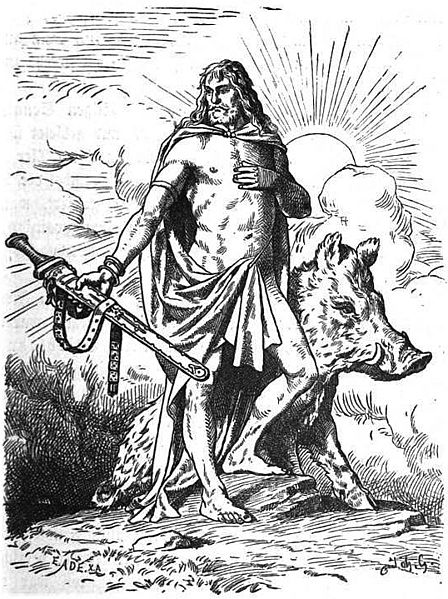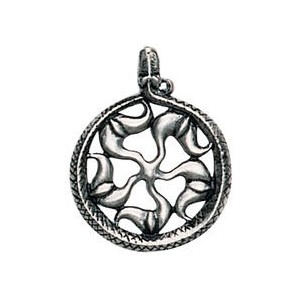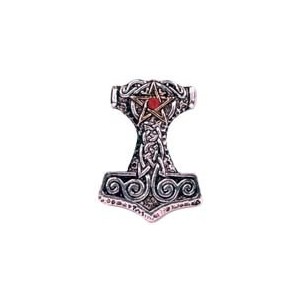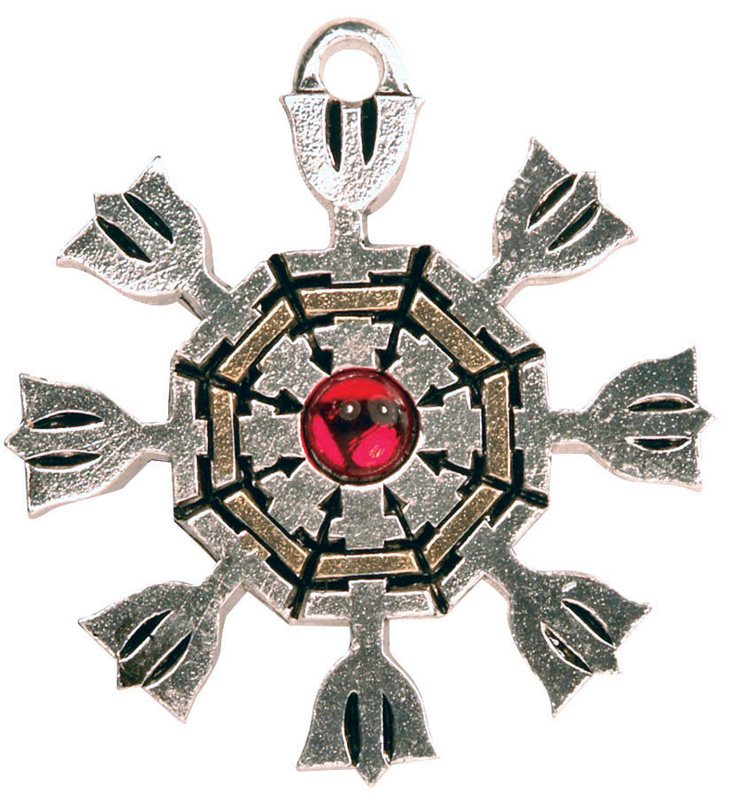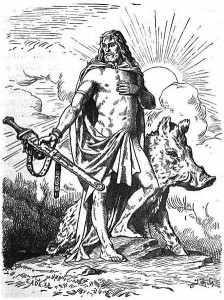 We’ve already explored the central roles that physical strength and war play in Viking mythology. But the Vikings were a multi-faceted people; they also told stories that celebrated peace, diplomacy and the courage to give up your arms and embrace those who had once been your enemies.
We’ve already explored the central roles that physical strength and war play in Viking mythology. But the Vikings were a multi-faceted people; they also told stories that celebrated peace, diplomacy and the courage to give up your arms and embrace those who had once been your enemies.
Again, the Vikings’ mythology reflected the conditions of their actual lives. No people, no matter how fierce, could continuously be at war. Many of the conflicts the Vikings experienced were no doubt internal conflicts, fights between various Viking families and clans. They needed inspiration and guidance on how to restore peaceful relations after violent disagreements.
Who is Freyr?
Several of the most potent Viking stories of peace feature the God Freyr. Freyr is a God of sunshine and plenty, pleasure and generosity. He is said to bring blessings of peace and prosperity to humans who honour him. Freyr has a close relationship with humanity; legends claim him as the Father of the Royal House of Sweden.
The story of how Freyr came to live in Asgard, home of the Norse Gods, is a tale of reconciliation going back to the very roots of Viking mythology. The Gods themselves were once split into warring clans: the Aesir and the Vanir. The Aesir, led by Odin, invaded the homeland of the Vanir, where Freyr lived with his fellow Vanir Gods and Goddesses.
The two clans fought each other bitterly. As you might expect from beings of vast supernatural power, the war between the two families of Gods went on for a long time, causing vast damage and loss to both sides.
Eventually, both the Aesir and the Vanir were ready for a peace treaty. In order to ensure that both sides honored the peace, the two families exchanged hostages; several Aesir Gods went to live with the Vanir in their homeland, and Freyr (as well as his sister Freya) went to live with the Aesir in Asgard.
Though he comes from an enemy clan, Freyr’s charm and contagious optimism soon won him the trust of the Aesir. As a token of their respect, the Gods gave Freyr Alfheim, the world of the elves, to rule over. In time, Freyr became one of the most prominent and powerful Gods in the Norse pantheon. He is the God of Sacred Kingship and masculine fertility, the bright sun who brings growth and plenty to all the land.
The Blessings of Freyr

The gifts that Freyr brings are those that come from a long peace; abundant harvests, stockhouses full of meat and cheese, celebratory feasts where neighbouring clans come together and dancing might lead to strangers becoming spouses.
Freyr himself fell in love with a stranger, in another old tale about the power of peace. He became infatuated by Gerd, a giantess. The giants were a race at war with the Gods. In order to win the trust and affection of his beloved, Freyr agreed to cast aside his magic sword. He won the hand of Gerd and the two were happily married. But Freyr’s sacrifice of his weapon came with a price; he was destined to be slain in the final war, Ragnarok.
Freyr, Lord of the Sun, can teach us how to move from strife and distrust towards peace and prosperity.
Working With Freyr
Ask yourself:
* Is there a way I can turn the forces I see as my enemies into my allies instead?
* Where do I need the life-giving abundance of the sun?
* What am I willing to sacrifice in order to find love and trust?
Freyr teaches us that peace and prosperity are bound up together. In the world of the Vikings, freedom from war meant more hands to work the fields and gather the harvests. For any society, it’s much easier to get along with your neighbours when you know there is plenty of food and sunshine to go around.
In the end, Freyr’s most powerful blessing seems to be the realisation that the well being and prosperity of our neighbours -even those we might sometimes deem enemies–brings good to us as well.
